The wait is interminable. The highest ranking wrestlers are always scheduled to compete at the end of the day. Now evening approaches. Stable mates and assistants keep everyone loose. Some wrestlers push against each other while others shove endlessly against immoveable walls. The wrestlers progress slowly from the locker rooms to the queue that leads to the ring. The windows of opportunities for these giants are small. Two months of training compress to an entire day of preparation that intensifies into a match that may not be won in the first point of contact but can be lost.
Before each wrestler’s match, they sit on the hot seat, the best seat in the house, beside the ring. Most look composed. This is an early show of force against their competitor. Some cannot hide their anxiety. Others flop sweat. The pressure is palpably visible. When it is finally each wrestler’s turn, they line up to the center of the ring a couple times, practice their timing, and size up each other with an unnerving stare. On the third line up, the air is thick with tension. The spectators are still and silent. The judge observes carefully to ensure that each wrestler’s breathing and hand movements are synchronized. Two months of training and a long day of preparation will go by in a flash.
Is this ancient Greece?
This is Japan, long ago and today.
Scroll down to see more captures and read more about Grand Sumo on NHK World-Japan.
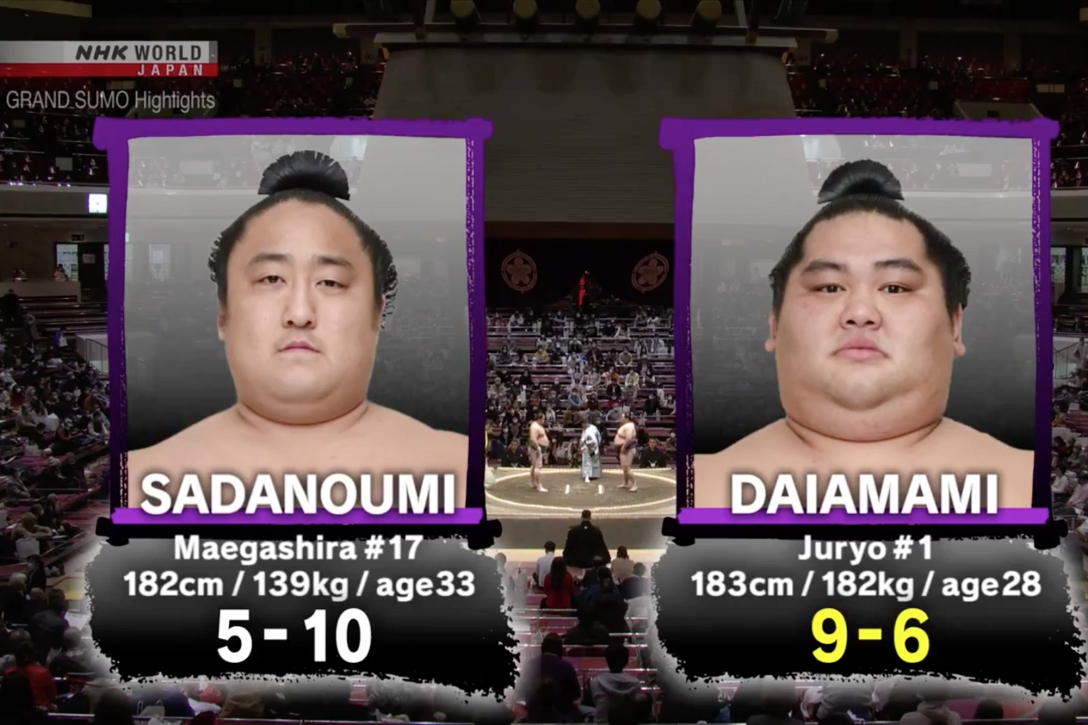

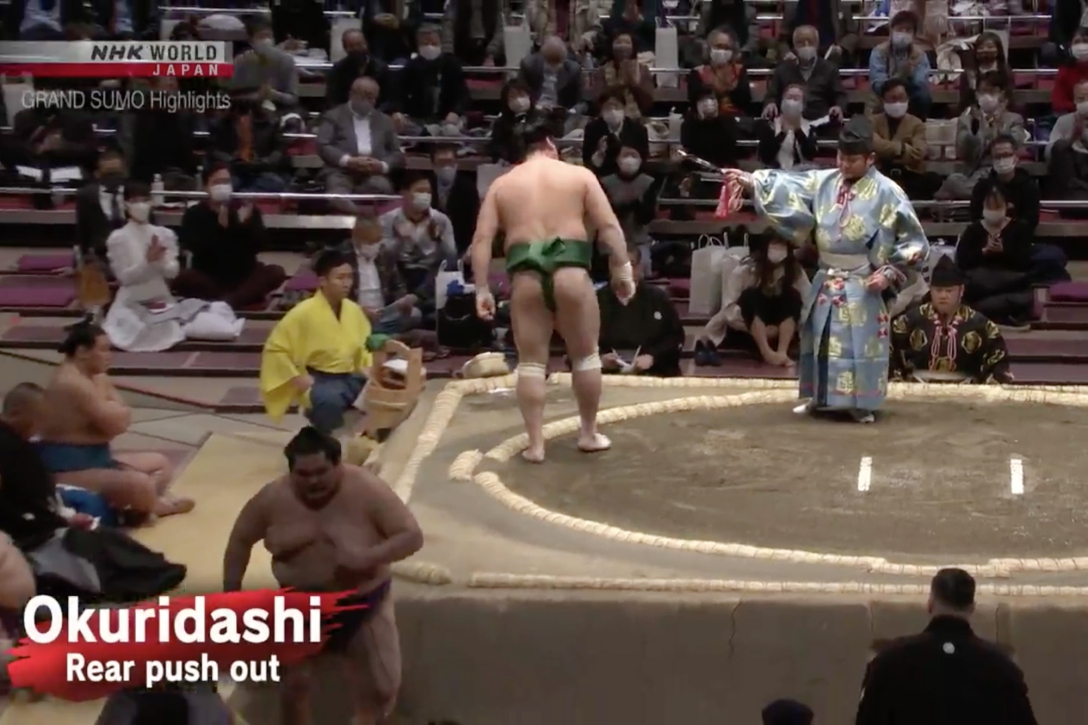

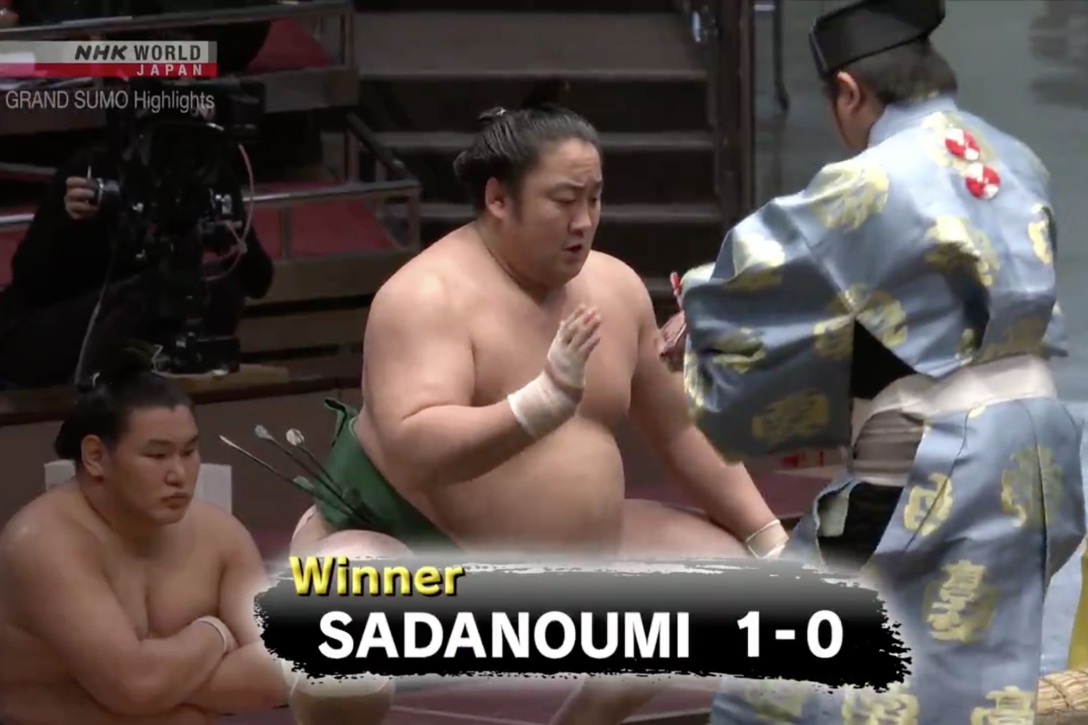
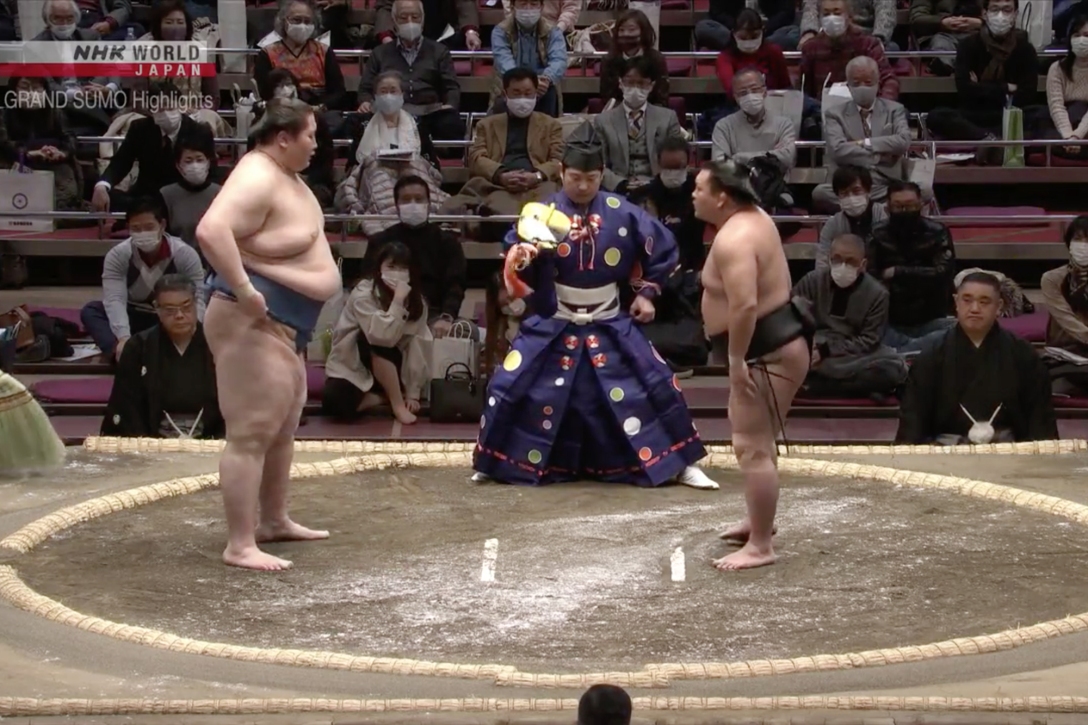


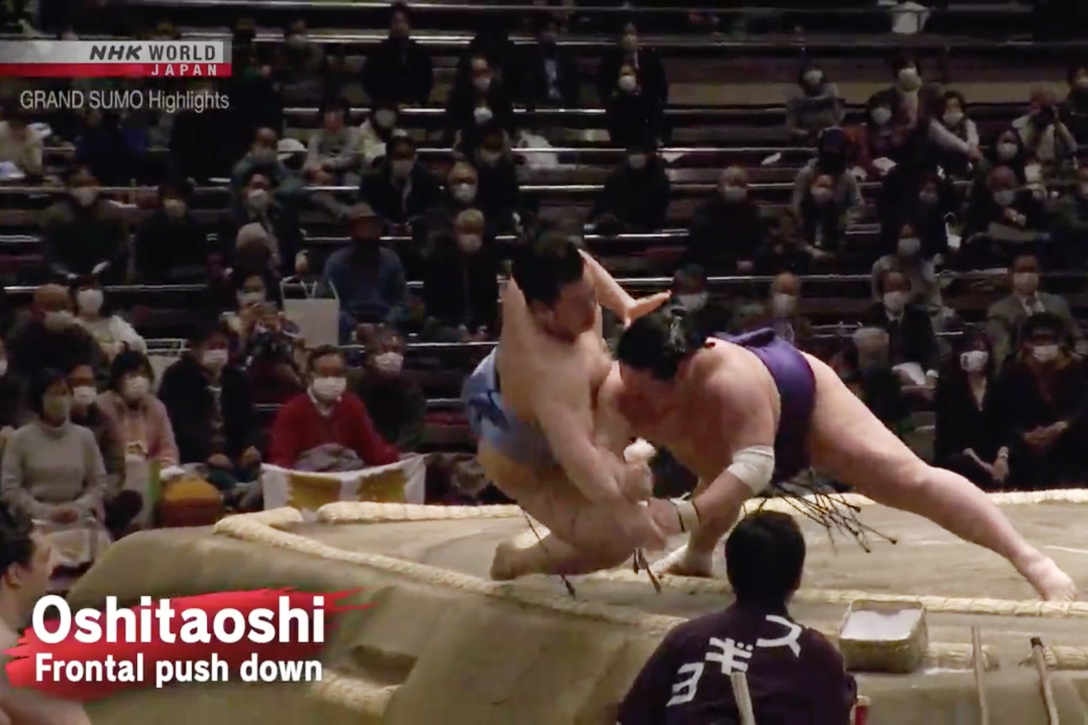




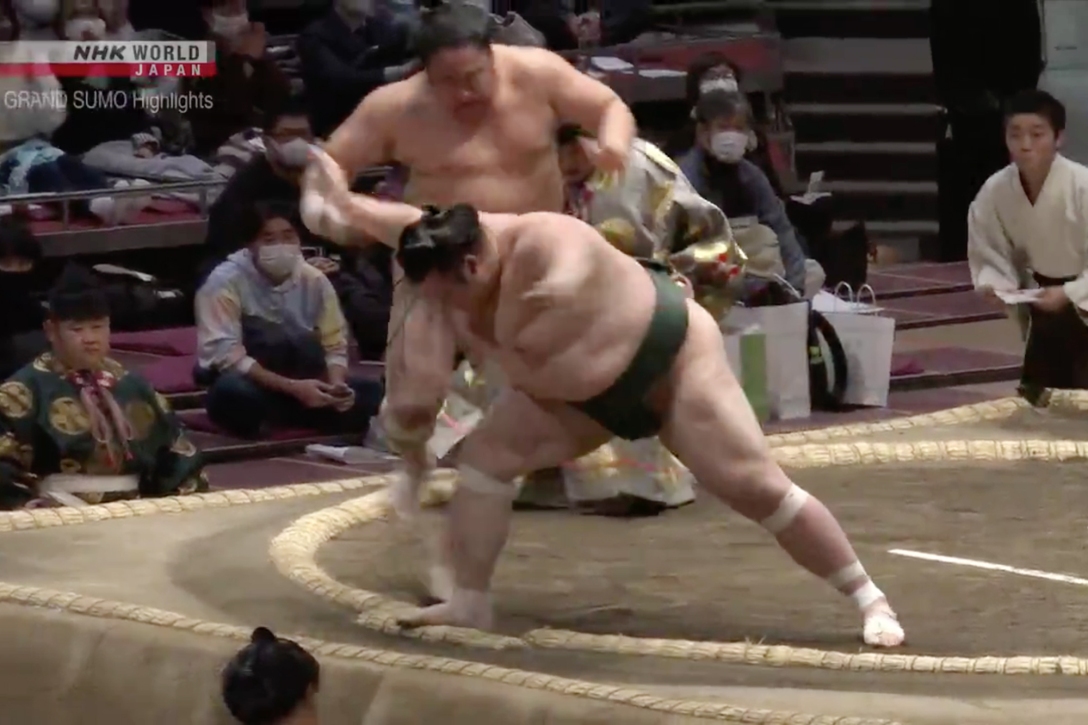




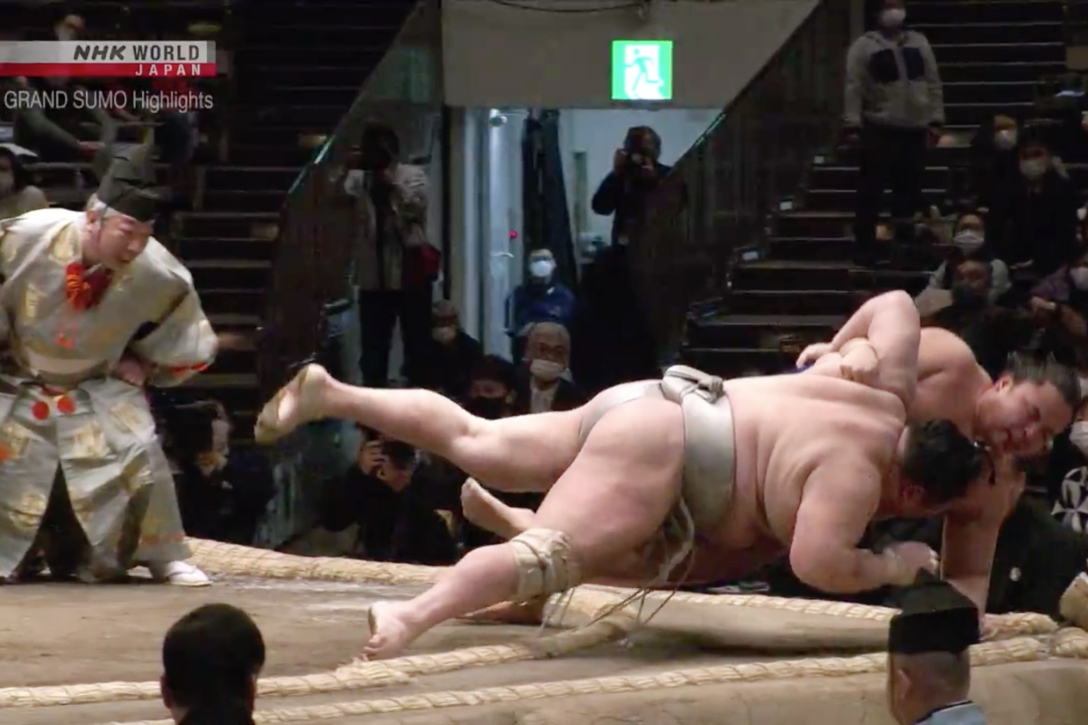
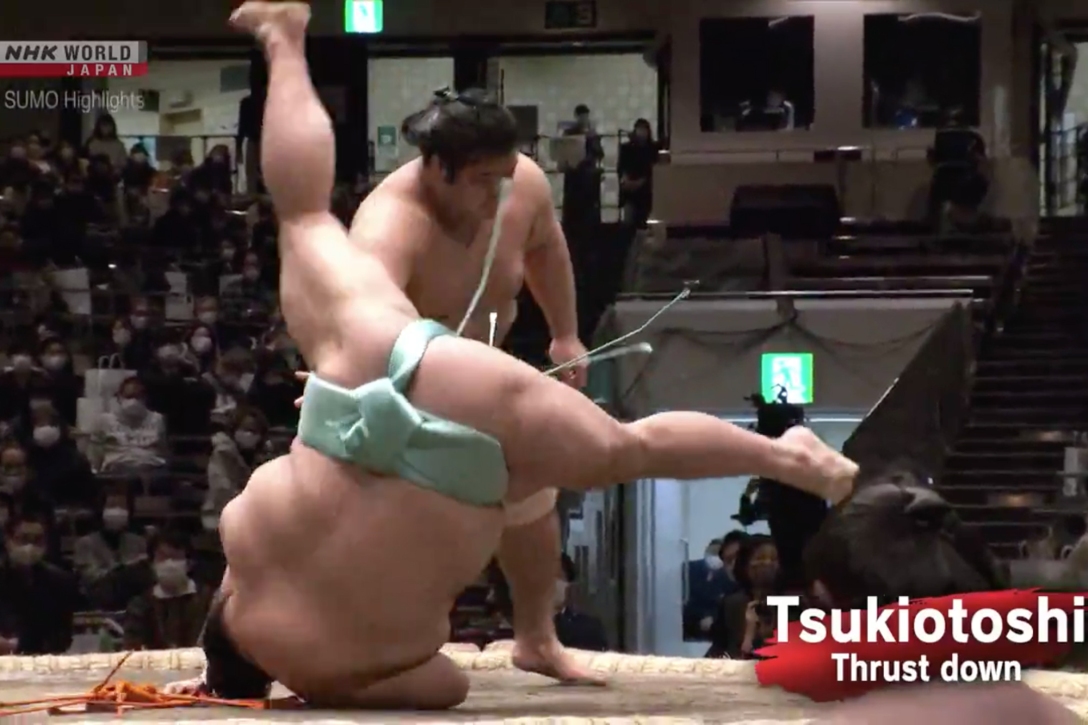
“I didn’t know anything about Sumo when I first started watching years ago, but I picked it up fast. Sumo speaks to all people. The excitement and intensity are in every match, especially when viewed live with Shikiri. The drama is like a play except that it’s real. There is no off season. Sumo is the livelihood for every Rikishi and it enriches our lives!”
NHK World-Japan broadcasts and streams Grand Sumo Highlights, 30-minute episodes of the best matches of the 15 days in the Basho, which traditionally take place in January in Tokyo, March in Osaka, May in Tokyo, July in Nagoya, September in Tokyo, and November in Fukuoka. There is no off season. NHK World-Japan has also started to broadcast and stream Grand Sumo Live, 60- or 90-minute blocks of the last several pivotal matches of that day, which reveal all the drama that unfolds between matches, including Shikiri (Toeing The Mark), which are the practice lineups before every match. Shikiri set the stage for the entire gravity of each match with all its pressure, and enable the viewer to fully appreciate the artistry and sport that is Sumo.
Immediately following the conclusion of Grand Sumo Highlights on the NHK World-Japan broadcasts is Sumopedia. These are 5-minute entertaining segments explaining the history and background of everything observed during the Basho. All the mysteries of Sumo are revealed. Sumopedia is an enriching wealth of much loved short videos that are always updated and must be seen.
Grand Sumo, or Makunouchi, is the Top Division of Sumo. These are prime matchups between the highest ranking Rikishi. The Makunouchi consists of (in ascending order): Maegashira, Komusubi, Sekiwake, Ozeki, and Yokozuna. There are East and West classifications, not pertaining to geography but a distinction that facilitates matchups; moreover, the West classification is seen as the “lower” group. This might support matchups between two Maegashira #17, for example. One Rikishi represents the East while the other the West, with the West being the “lower” rank than the East. There are 17 Maegashira each from the East and the West. All other ranks do not have a numbering system.
Ozeki used to be the highest rank until the rank of Yokozuna was created. The promotion to Yokozuna is determined by a Rikishi’s progress arc; and, most important, the selection after exhaustive deliberation by the Yokozuna Deliberation Council who are appointed by the Japan Sumo Association. Yokozuna are the only rank that cannot be demoted, but it is expected that the Rikishi will retire if their decline should become obvious. All other ranks are promoted or demoted following the conclusion of each Basho.
Sometimes a Maegashira will be demoted from Makunouchi and fall to Juryo, the highest rank just beneath Makunouchi. Occasionally, high ranking Juryo will get called up to participate in Makunouchi during a Basho due to injury or illness among Rikishi in Makunouchi. It is the dream of every Juryo to be promoted (or re-promoted) to Maegashira and enter the Dohyo in Makunouchi.
“I grew up watching Sumo. It was all Japanese Rikishi then; but, now I see more international competition, and some of them are doing well. Sumo is a very demanding sport. Hats off to all Rikishi. I still see the old beauty of Sumo!”
The life of a potential Rikishi begins sometime during childhood. Some boys aspire to become legends. They choose to enter Heya (a Training Stable) to begin the arduous journey to become a Sumo wrestler. Most will never achieve Rikishi status; but, some Heya still exist today as the birthplaces of the most famous Rikishi to ever compete. There is a famous saying in Japan, roundabout translated as, “One hundred years after a person’s death, no one will remember them.” This would be true for most everyone. But Sumo has existed for hundreds of years. Champions from long ago are still revered and celebrated. Just imagine the gleam in the eye of a young boy who aspires to become a Rikishi, a Yokozuna—a legend.
Traditions in Sumo will always persevere, but change is embraced more and more. In the past, all Sumo wrestlers were Japanese. Now, some are foreign. A few achieved glory as Yokozuna. There are no weight classifications, only rankings based on achievement. And so, some Rikishi more closely resemble their predecessors from long ago, much smaller, competing with skill and agility. This keeps the matches interesting and less dependent on sheer size and strength.
One tradition that all Sumo wrestlers must follow is the ceremonial display of Chonmage (Top Knot). It is the customary top knot that can be traced to the Edo Period and the time of Samurai. Over the years, a few Rikishi were losing their own personal battles, and struggled to be styled with Chonmage. Change in Sumo is embraced more and more, but I would never bet that clip-on Chonmage might become a thing if it should come to that.
With the lack of an off season, the Basho just keep coming. Sumo is a sport that keeps rolling through the centuries. Lest anyone think that Rikishi are used up and tossed aside, Rikishi often marry beautiful spouses, have lovely families, and live like kings, including foreign Rikishi. And to perpetuate this career that usually lasts into the mid- to late-thirties, Rikishi must maintain a level of fitness that would shame those in professional team sports with off seasons. Since there is an ongoing schedule of Basho every other month, hard life in the Heya never stops. Rikishi devote their time to fitness, training, nutrition, learning, arts, maintenance, cooking, and more. A Heya is like a sports academy combined with finishing school from childhood to middle age.
Some successful Rikishi, post career, start their own Heya and apply their knowledge and philosophy to mentor upcoming Sumo wrestlers. Some of the former Rikishi become more famous as a Shisho (Sumo Stable Master) if their Heya produces successive champions.
“I love that Sumo is so raw and honest—no equipment. I really like that the tournament is 15 days long; I get to see the drama develop. There’s suspense and excitement. I like that the tournament rankings are always updated. The lowest Rikishi in the Makunouchi can win the Basho, and the best can drop down. I love the traditions and the fact that there’s no weight classifications. It’s cool to see a smaller Rikishi take on a behemoth and win with the right strategy!”
My mom, Lisa and I started to follow Sumo at different times in our lives. Sumo was in a different evolutionary state for each of us when we began to follow the sport, but it has stayed consistent through the years for all of us. We are like specks of ink on the canvas of Sumo as it unfurls through time. I asked everyone for their thoughts on Sumo. My mom: “I grew up watching Sumo. It was all Japanese Rikishi then; but, now I see more international competition, and some of them are doing well. Sumo is a very demanding sport. Hats off to all Rikishi. I still see the old beauty of Sumo!” Lisa: “I love that Sumo is so raw and honest–no equipment. I really like that the tournament is 15 days long; I get to see the drama develop. There’s suspense and excitement. I like that the tournament rankings are always updated. The lowest Rikishi in the Makunouchi can win the Basho, and the best can drop down. I love the traditions and the fact that there’s no weight classifications. It’s cool to see a smaller Rikishi take on a behemoth and win with the right strategy!” And me: “I didn’t know anything about Sumo when I first started watching years ago, but I picked it up fast. Sumo speaks to all people. The excitement and intensity are in every match, especially when viewed live with Shikiri. The drama is like a play except that it’s real. There is no off season. Sumo is the livelihood for every Rikishi and it enriches our lives!”









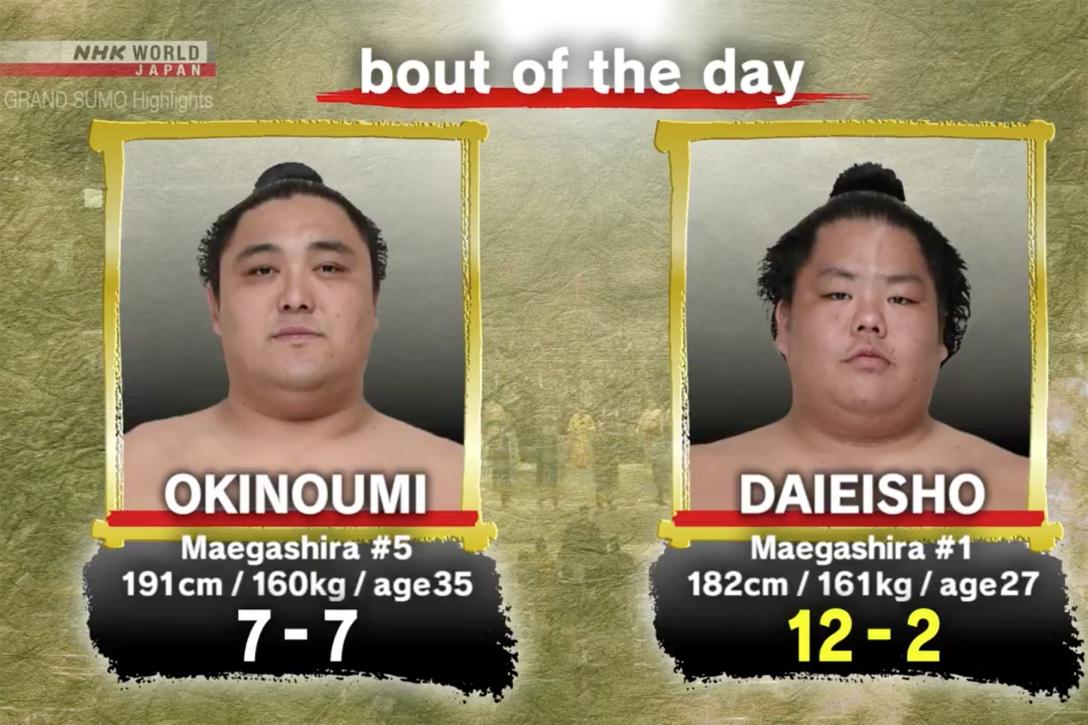




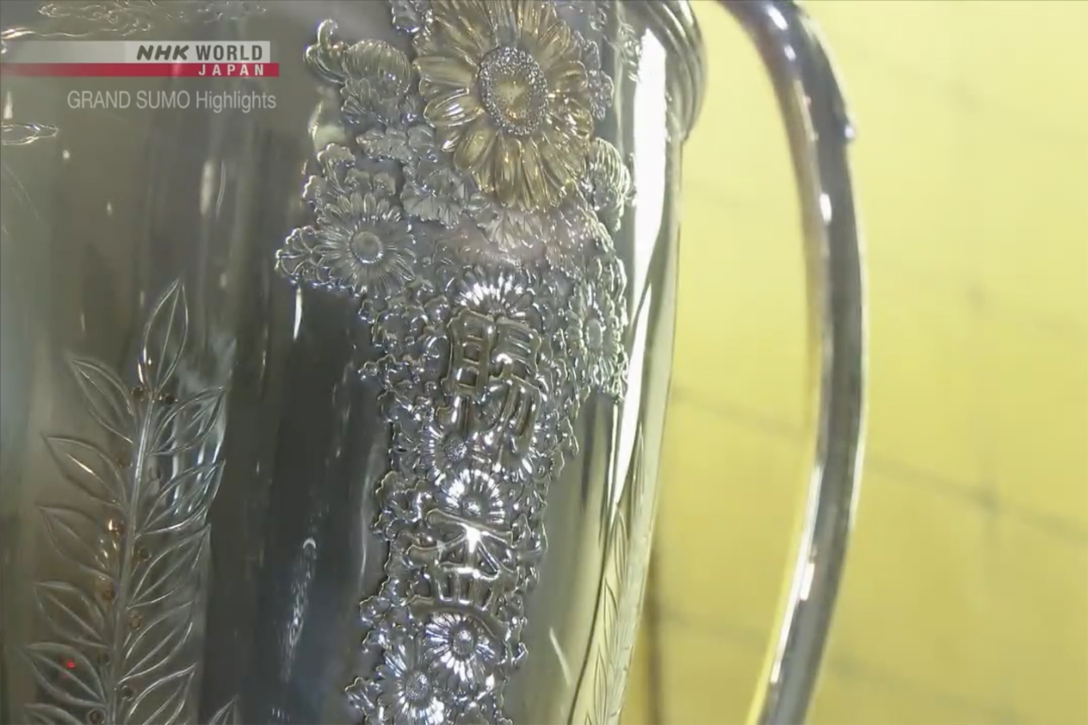


If life is a journey, and the scroll of life unfurls as we travel forward, then we may enter a period of Sumo, depicted by the black lines beautifully illustrated by the masterful brush strokes of the Rikishi educated in the Heya. If the Rikishi are the artists in the sport of Sumo, then we are the spectators, mere specks of ink, in awe of the legends in the making. One hundred years after our deaths, for most of us, no one will remember us. But for some Rikishi, who become the greatest of Yokozuna, everyone will know their names. Remember me for centuries.
To learn more about Sumo, and to watch Grand Sumo on NHK World-Japan, visit NHK World-Japan
If you are on Facebook, follow me at Facebook – The Simple Luxuries
To see more captures of Grand Sumo on NHK World-Japan, follow my Instagram page at Instagram – The Simple Luxuries
All captures: ©NHK
“My camera is my witness. My blog is my voice.” ©2021
The raw power and technical skills in a sumo match make it very exciting!
LikeLiked by 2 people
NHK World-Japan brings us all the Sumo action!
LikeLike